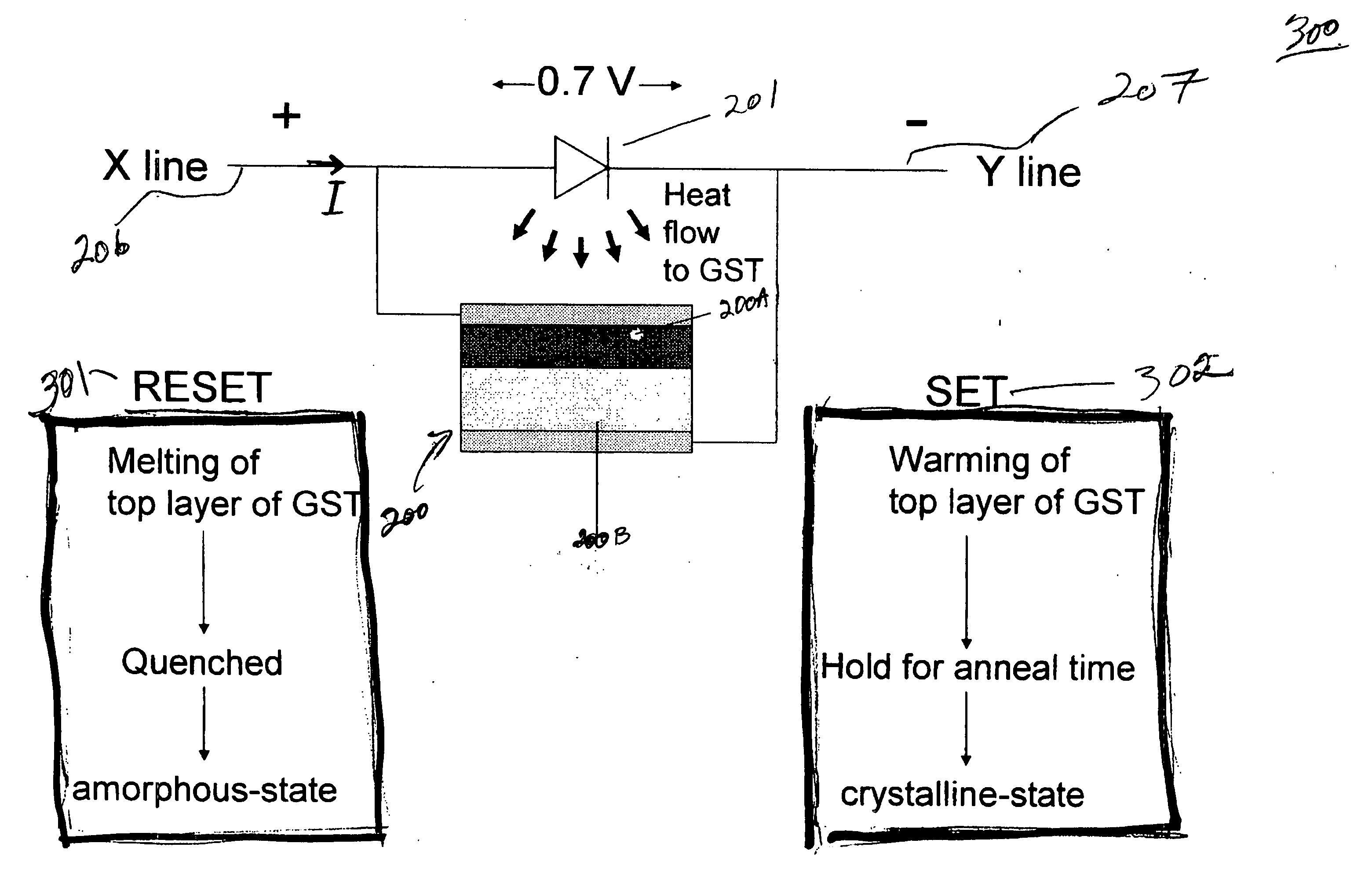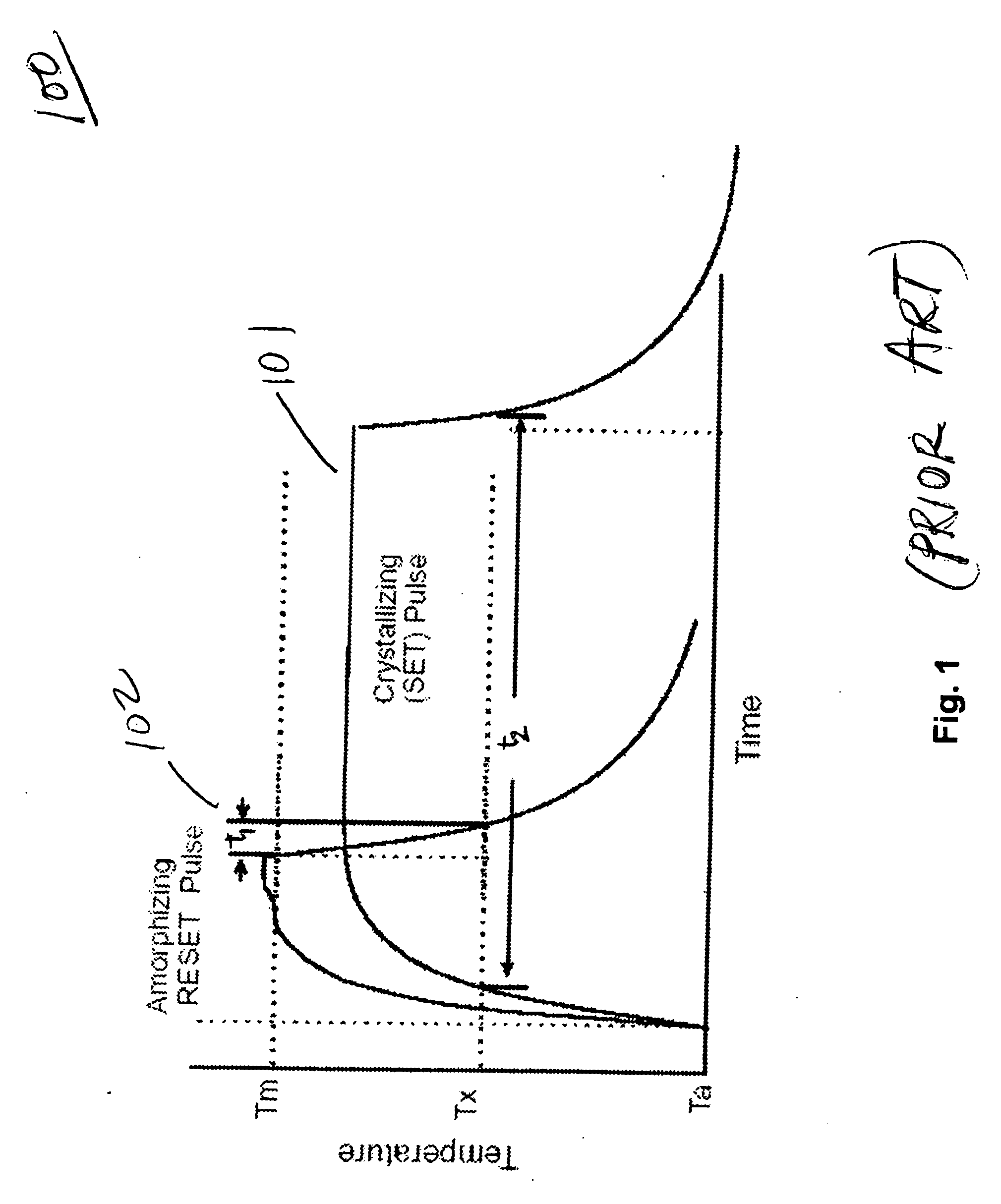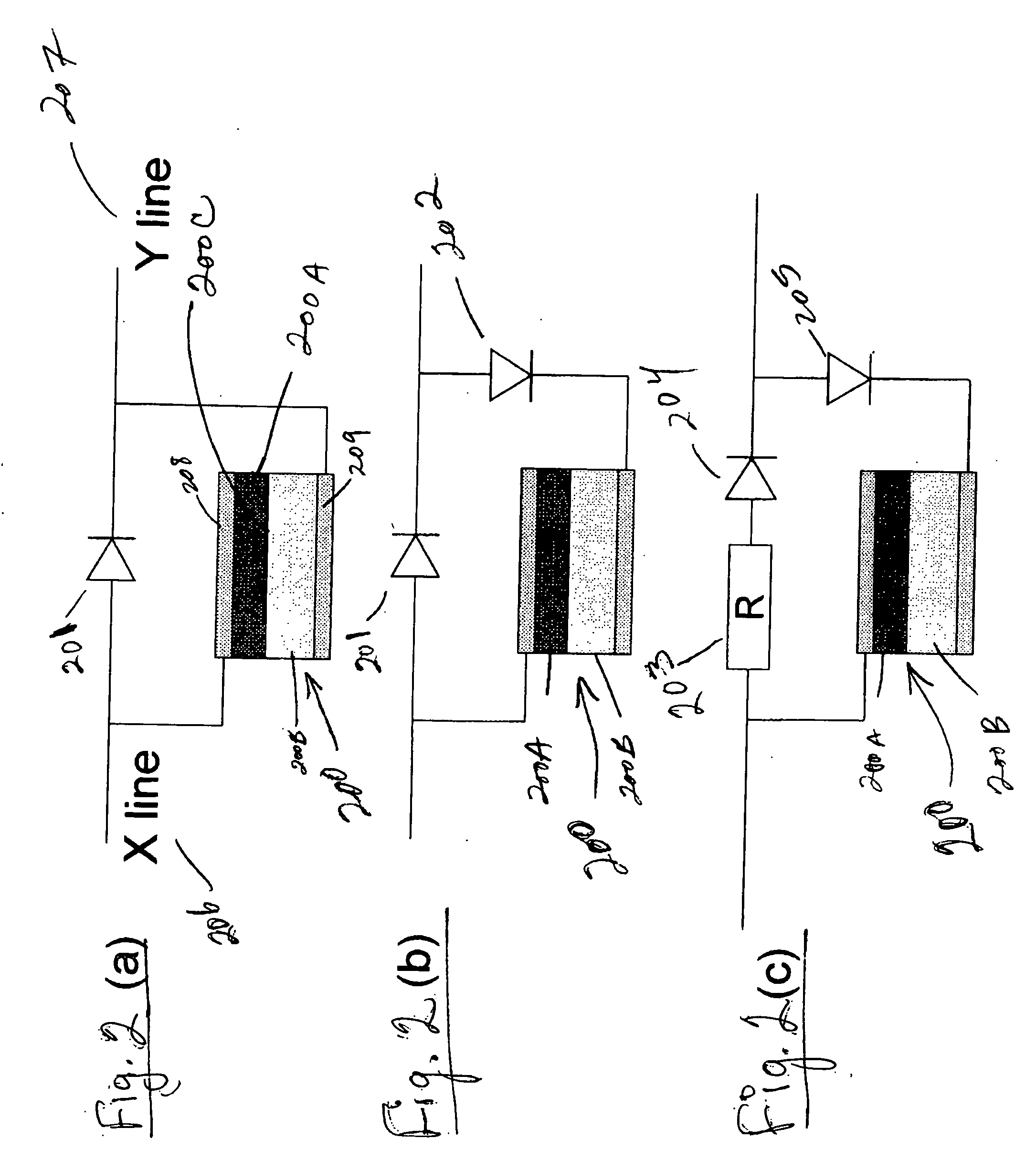Method and structure for high performance phase change memory
a phase change memory and high-performance technology, applied in the field of phase change memory, can solve the problems of poor control of the switching process, low memory utilization rate, and loss of memory when the computer or the device is switched off, and achieve the effects of improving performance, speed and size, and high density properties
- Summary
- Abstract
- Description
- Claims
- Application Information
AI Technical Summary
Benefits of technology
Problems solved by technology
Method used
Image
Examples
Embodiment Construction
[0043] Referring now to the drawings, and more particularly to FIG. 2a through FIG. 18, exemplary embodiments of the present invention will now be described.
[0044] It is noted that one of ordinary skill in the art, after having read the details described herein, would readily be able to recognize the present invention as a broad concept in which a thin layer (e.g., within a range of about 2 to about 10 nanometers) within a PCM having a larger total thickness (e.g., about 50 nm or more), highly controllable by using an external heating element, provides the mechanism to provide drastic improvement in switching speed for PRAM.
[0045] In the context of the present invention, the term “nanoscopic” is intended as meaning a dimension of 100 nm or less. Thus, a concept of the present invention is that an information bit can be stored in only a nanoscopically thin surface layer of a PCM layer that has a thickness relatively larger than the thin surface layer of the that is of the PCM that ...
PUM
 Login to View More
Login to View More Abstract
Description
Claims
Application Information
 Login to View More
Login to View More - R&D
- Intellectual Property
- Life Sciences
- Materials
- Tech Scout
- Unparalleled Data Quality
- Higher Quality Content
- 60% Fewer Hallucinations
Browse by: Latest US Patents, China's latest patents, Technical Efficacy Thesaurus, Application Domain, Technology Topic, Popular Technical Reports.
© 2025 PatSnap. All rights reserved.Legal|Privacy policy|Modern Slavery Act Transparency Statement|Sitemap|About US| Contact US: help@patsnap.com



